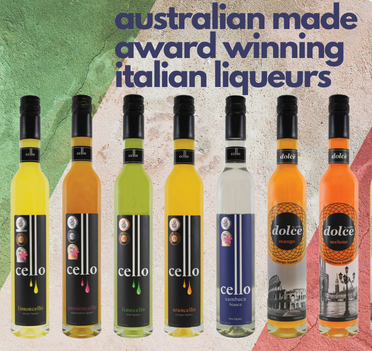Scotch Whisky: Unraveling the Enchanting World of Scotland's Liquid Gold
Unlock the Mystique of Scotch Whisky - An Expert Guide to the Range, Types, and Regions of this Timeless Elixir
Enter the captivating realm of Scotch whisky, where centuries of tradition and craftsmanship unite to produce one of the world's most revered spirits. With a history steeped in legend and a flavour profile that has evolved over centuries, Scotch whisky stands as a symbol of Scotland's rich cultural heritage and unmatched distilling expertise. In this comprehensive guide, we will embark on a journey to explore the diverse range, enticing types, and iconic regions that contribute to the allure of Scotch whisky.
1. Understanding the Range of Scotch Whisky
Scotch whisky encompasses a vast range of expressions, each characterised by unique flavour profiles, production methods, and aging techniques. The three main categories of Scotch whisky are:
a) Single Malt Scotch Whisky: Crafted exclusively from malted barley, single malt Scotch is the product of a single distillery and represents the purest expression of the distiller's artistry. The distinctive flavours derived from various factors, such as the local water source, the copper pot stills, and the oak casks used for aging, create a symphony of tastes that is unparalleled in the whisky world.
b) Blended Scotch Whisky: Blended Scotch is a harmonious marriage of single malt whiskies from different distilleries and grain whiskies. Master blenders skillfully combine these components to achieve a balanced and consistent flavour profile. Blended Scotch whiskies offer versatility and accessibility, making them an ideal choice for both connoisseurs and novices alike.
c) Single Grain Scotch Whisky: Distilled from grains other than barley, single-grain Scotch whisky complements the malt's character with a lighter and more delicate profile. Though often used as a blending component, some single-grain expressions stand as exceptional spirits in their own right.
2. Exploring the Types of Scotch Whisky
Within the overarching categories, Scotch whisky diversifies further based on various production methods and maturation periods. The key types of Scotch whisky include:
a) Peated Scotch Whisky: Peat, a type of soil rich in decomposed vegetation, is traditionally used in some whisky-producing regions to dry malted barley. This process imparts a smoky and earthy flavour to the whisky, creating a distinctive profile cherished by whisky enthusiasts worldwide. Regions such as Islay are particularly renowned for their peated whiskies.
b) Non-Peated Scotch Whisky: In contrast to peated whisky, non-peated Scotch is dried using hot air, resulting in a milder and fruitier flavour profile. Regions like Speyside are renowned for their non-peated expressions, characterized by floral and fruity notes.
c) Cask-Finished Scotch Whisky: Some whiskies undergo a second maturation period in different types of casks, such as sherry, port, or wine casks. This secondary aging imparts additional layers of complexity and unique flavour nuances to the whisky, elevating the drinking experience.
d) Cask Strength Scotch Whisky: Bottled straight from the cask without dilution, cask strength Scotch whisky boasts higher alcohol content, often ranging between 50% to 60% ABV (alcohol by volume). This potent elixir offers an unadulterated taste of the whisky's full intensity and complexity.
e) Limited Edition and Rare Scotch Whisky: Distilleries occasionally release limited edition and rare bottlings, showcasing exceptional whiskies that are often aged for extended periods. Collectors and enthusiasts eagerly seek these unique expressions for their scarcity and exceptional quality.
3. The Alluring Regions of Scotch Whisky
Scotland's diverse landscape and distinct microclimates contribute to the regional variations found in Scotch whisky. Each whisky-producing region boasts its own characteristics and flavour profiles:
a) Speyside: Nestled along the River Spey, this region is a heartland of Scotch whisky production. Speyside whiskies are known for their elegant and fruity nature, often featuring notes of apples, pears, and honey. Renowned distilleries like Glenfiddich, Macallan, and Glenlivet call this region home.
b) Highland: Encompassing a wide geographic area, Highland whiskies display great diversity. From the robust and full-bodied expressions of northern distilleries to the lighter and more delicate whiskies from the Southern Highlands, this region offers a broad spectrum of flavours.
c) Islay: A rugged island characterized by its peat-rich soil and coastal exposure, Islay is the epitome of peated Scotch whisky. Islay whiskies are famous for their smoky, medicinal, and briny flavours, creating an unforgettable sensory experience.
d) Lowland: Known for its gentle and approachable whiskies, the Lowland region typically produces lighter and floral expressions, often devoid of peat. A perfect entry point for whisky novices, whiskies from this region exhibit delicate notes of grass, citrus, and vanilla.
e) Campbeltown: Once a thriving whisky-producing hub, Campbeltown now hosts a few distilleries known for their distinct maritime and briny character. These whiskies often blend elements of both Highland and Islay styles.
Scotch whisky stands as a timeless elixir that captivates the senses with its rich history, diverse range, and unparalleled complexity. From the rugged shores of Islay to the serene glens of Speyside, each region contributes its unique charm to the whisky world. Whether you're savouring a peaty Islay single malt or sipping a delicate Lowland blend, the magic of Scotch whisky lies in its ability to transport you to the very heart of Scotland's enchanting whisky heritage. Raise your glass and toast to the artistry, tradition, and boundless flavours of Scotland's liquid gold!
Subcategories Subcategories
Refine Product Search Refine Product Search
- $7.44
- $69874.99
$ – $
-
}
-
-
No items found matching the search criteria
Show all Show less






















































 Login with Google
Login with Google
